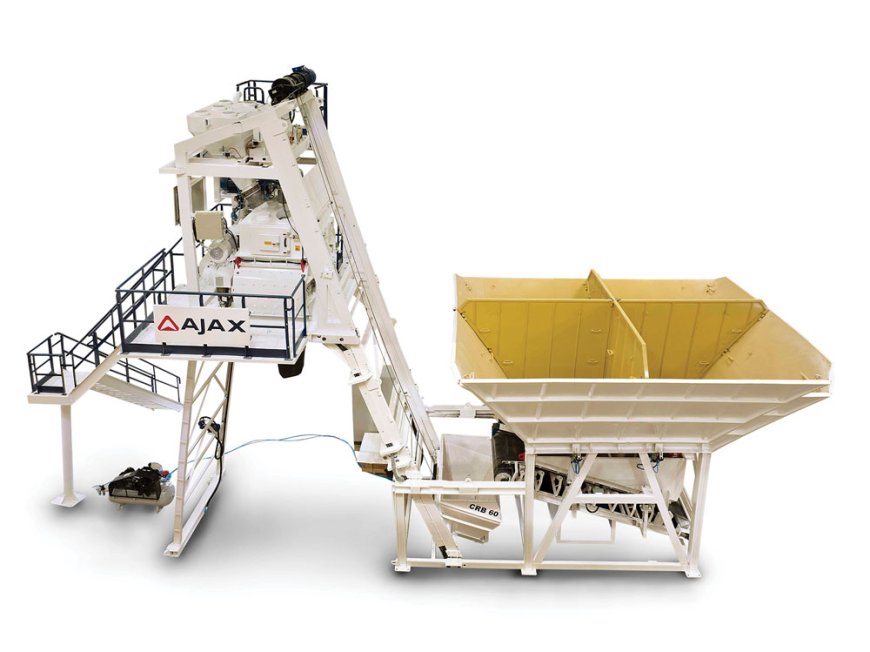Our indigenously developed slip-form paver offers several advantages over imported models.

Shubhabrata Saha,
What is the current market scenario in concrete plants and equipment?
The current market scenario for concrete plants and equipment has been increasingly optimistic. Recent reports from the Indian Construction Equipment Manufacturers’ Association (ICEMA) indicate that the country’s construction equipment industry saw a 26% increase in sales to 1,35,650 units in the 2023-24 fiscal.
The construction equipment market in India witnessed a CAGR of 26% post-Covid years. We expect a continuous growth trajectory in the industry, fuelling project execution and demand for equipment with GoI’s a strong focus on infrastructure development with capital investment outlay for infrastructure has been increased by 11.1% to Rs 11.11 lakh crore (approximately USD 133.86 billion), which represents 3.4% of GDP.
The construction equipment in India is gaining significant momentum, driven by various factors. Robust government initiatives aimed at infrastructure development, urbanization, and industrialization have propelled the demand for construction machinery. Building on the massive tripling of the capital expenditure outlay in the past four years resulting in huge multiplier impact on economic growth and employment creation. The healthy allocation for capital spending in the interim budget 2024-25 coupled with ambitious targets set under the National Infrastructure Pipeline (NIP), are expected to boost infrastructure development in segments like roads, metros, railways, etc, and thus, drive volumes for the industry. This surge is especially notable in the concrete equipment segment, where products like concrete batching plants, transit mixers, and concrete pumps are in high demand due to ongoing projects. Secondly, the flourishing real estate sector in India is another major contributor to the growing construction equipment market. The construction of both residential and commercial properties necessitates the use of concrete equipment, further boosting demand. Furthermore, the introduction of advanced and efficient concrete equipment, featuring automation and telematics, has revolutionized the construction industry. These innovations have not only improved productivity but also reduced operational costs, making them increasingly attractive to builders and contractors. As India continues to focus on infrastructure and urban development, the construction equipment market is expected to thrive in the coming years.

What are the technological innovations in your product range? How are these innovations helping in better productivity and efficiency in construction projects?
AJAX Engineering’s 3D concrete printer can construct 350 square meter home in just 3 days. This technology offers rapid, cost-effective, and environmentally sustainable alternatives to conventional methods. The AJAX 3D concrete printer excels in large-scale applications, supporting mass housing solutions to meet affordable housing goals. It can also create various structures, including villas, post offices, fire stations, wind turbine bases, and sculptures. The printer translates CAD designs into physical objects, reducing material wastage and increasing strength and durability.
AJAX Engineering is committed to driving productivity and efficiency in construction projects through our innovative technologies. One of our standout advancements is the integration of load cell technology in our self-loading concrete mixers. By utilizing precise sensors, this technology ensures perfectly balanced concrete mixes, achieving the desired strength and durability while significantly reducing material waste. This automation not only speeds up the process but also minimizes human error, guaranteeing consistent quality. This approach optimizes material usage, resulting in cost savings and reduced environmental impact. Moreover, our self-loading mixers enhance fleet management and operational efficiency by producing high-quality concrete directly at job sites, thereby reducing the need for multiple trips to batching plants.
In addition, we have introduced the boom pump mounted on a compact 4/2 chassis, which is more compact and lightweight, making it ideal for navigating narrow or congested urban job sites. This maneuverability greatly enhances accessibility and speeds up construction processes by allowing concrete to be placed directly at the point of use, even in hard-to-reach areas. The smaller chassis also leads to lower initial investment and operational costs, including fuel consumption, and simplifies maintenance, making it a practical choice for a wide range of projects.
Our indigenously developed slip-form paver offers several advantages over imported models. By supporting local industries, we contribute to economic growth within the country. Local production ensures easier access to spare parts and quicker service, reducing downtime. Additionally, our slipform pavers can be customized to meet specific local construction standards and conditions. They are also more cost-effective, as they eliminate import duties and reduce transportation costs.
These innovations collectively enhance precision and quality, minimize wastage, expedite operations, reduce costs, and promote sustainable practices. As a result, AJAX delivers more efficient, cost-effective, and environmentally friendly construction projects, solidifying our position as a leader in the concrete equipment industry.

How do you visualize the demand trend for concrete equipment in the coming years?
There has been a significant push towards infrastructure from the government of India in recent years, complemented by an increase in demand in export markets which has driven growth and innovation within the concrete equipment industry. India is currently the third-largest construction equipment industry globally generating an annual turnover of US$8.5 billion approximately. Projections by the ICEMA indicate that by 2030, India will rank as the world’s second-largest player in the CE industry if it continues to grow at a CAGR of 8.9%, reaching a value of US $13.17 billion.
The growth of the construction equipment industry can primarily be attributed to demand drivers such as road construction, irrigation, urban rail development and mining. With the Pradhan Mantri Gram Sadak Yojana (PMGSY) receiving its highest ever budget allocation of Rs 796 billion in 2023-24, rural development has become a cornerstone of the country’s ‘Viksit Bharat’ vision. The rapid rate of roads, metros, ports, and airport construction projects has also significantly contributed to the growing demand for concrete equipment.
The future of the concrete equipment industry cannot be discussed without considering the issue of sustainability. Any development we see in this sector in the coming years must be in alignment with India’s net zero goals, ensuring that advancements contribute to reducing carbon emissions, promoting eco-friendly practices, and incorporating renewable energy sources. To that end, we will witness an increased shift towards electric machinery, sustainable sourcing of biomaterials, usage of renewable sources of energy, and the implementation of circular economy principles to minimize waste and maximize resource efficiency.







